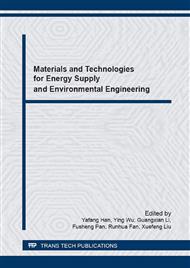p.29
p.33
p.39
p.46
p.50
p.59
p.65
p.72
p.78
Study on Sorption Behavior of Cesium by Graphite
Abstract:
It has long been recognized that a need for practical methods for maintaining optimum cesium pressure within a thermionic energy converter has been pursued for space applications. An attractive solution to the problem is the use of a sorption type reservoir where cesium absorbed into a lattice. Four graphite materials were initially investigated for the potential usage as cesium storage media. Primary research focusing on the characteristics of loading ability, structural integrity, and dimensional change of these materials was performed by synthesizing proper cesium-graphite lamellar compounds with a two zone vapor transport method. Graphite foams show promising prospect for thermionic application as integral cesium reservoir material.
Info:
Periodical:
Pages:
50-55
Citation:
Online since:
March 2016
Authors:
Price:
Сopyright:
© 2016 Trans Tech Publications Ltd. All Rights Reserved
Share:
Citation:


